How To Be: The Covers of 2021
When I do the How To Be cover graphics, I’m also very self-impressed with them as their own jokes/visual pieces. Presented here then is a summary of 2021’s How To Be entries for the year, with an overview of what you might want to use these articles for.
Continue Reading →How To Be: Kipo (in 4e D&D)
In How To Be we’re going to look at a variety of characters from Not D&D and conceptualise how you might go about making a version of that character in the form of D&D that matters on this blog, D&D 4th Edition. Our guidelines are as follows:
- This is going to be a brief rundown of ways to make a character that ‘feels’ like the source character
- This isn’t meant to be comprehensive or authoritative but as a creative exercise
- While not every character can work immediately out of the box, the aim is to make sure they have a character ‘feel’ as soon as possible
- The character has to have the ‘feeling’ of the character by at least midway through Heroic
When building characters in 4th Edition it’s worth remembering that there are a lot of different ways to do the same basic thing. This isn’t going to be comprehensive, or even particularly fleshed out, and instead give you some places to start when you want to make something.
Another thing to remember is that 4e characters tend to be more about collected interactions of groups of things – it’s not that you get a build with specific rules about what you have to take, and when, and why, like you’re lockpicking your way through a design in the hopes of getting an overlap eventually. Character building is about packages, not programs, and we’ll talk about some packages and reference them going forwards.
Kipo and the Age of Wonderbeasts is a Netflix TV series created by Radford Sechrist that started its life as a webcomic. The series is something I’ve praised in the past as being uncomplicatedly excellent. Set in a post-apocalyptic far future populated with anthropomorphic animals, it’s a story of a journey of adventure, beset on all sides by a dangerous villain with superpowers who, if he catches our heroes, may destroy their ability to ever defy him. It’s a great adventure structure, and one you should feel free to steal, and central to it all is the character of Kipo, a girl with pink skin whose position in the story is at the intersection of multiple sequences of events, set in motion before she was even born.
And like, I don’t normally do this, but I’m going to put a spoiler warning here. If you read these articles idly, and think you’d like to watch Kipo at some point, you should go do that before reading this article, because I’m going to talk about some stuff Kipo can do that isn’t obvious from the start of the story. I mean, oh okay, shock and horror, Kipo is special, obviously, you know that and I know that just looking at the fact the series is named after her, but nonetheless, I just want you to know, going on, that there be spoilers.
Good?
Good.
Okay, onwards.
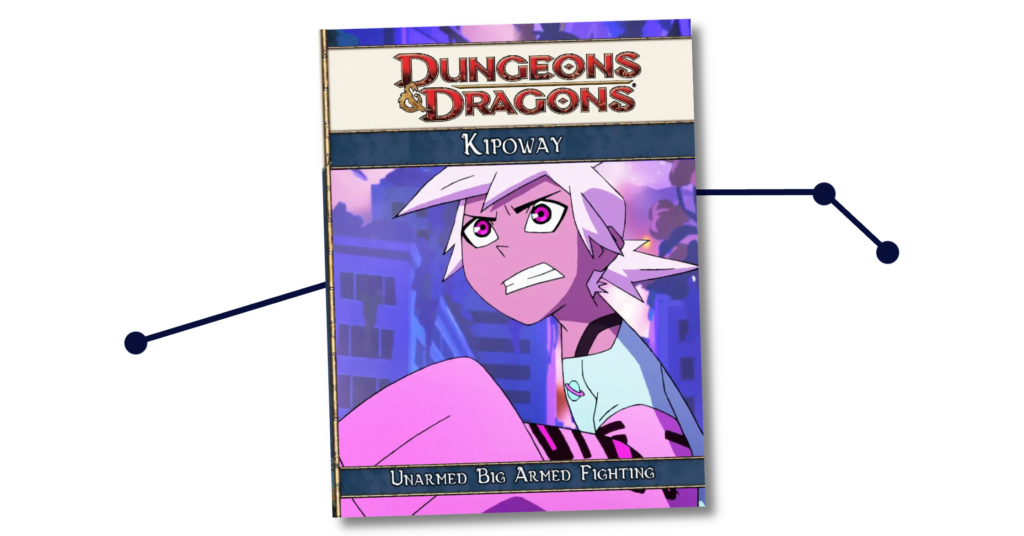
4E: The Hadalan
… And there, in the deepest and darkest of spaces, far from the prying eyes of those who would judge their work, or steal their designs, a god whose name is lost, did render the form of what it had seen, and sought to make its own.
It made what it thought it saw, when it saw humans.
And when it saw what it had done, it was revolted, and fled.
The Hadalan are a rare culture from the deep oceans of Cobrin’Seil. There are people of the seas – not like the cultures of merfolk and triton, that live up near the continents, building cities at the edges of the shelf where the land falls away into dark ocean. The Hadalan are from deep in the ocean; from places where vents in the earth belch bubbles and plumes of smoke into an uncaring darkness, where great bugs sift the sands, and where the dead bones of ship and whale alike lay in the muck, too cold and dark and barren to rot.
There are stories of the Hadalan. It’s said they are people who do not have souls. When seen from a distance, their shapes are hazy and indistinct, sailors say; they change shape and morph into strange and inhuman forms. Some say they eat souls, feasting on life to life to extend their own.
And there are the stories they tell of themselves.
The Hadalan, when asked, tell stories about how they were created without souls. About how they were abandoned by a god, who was horrifed at having made them. About the way they refused to die, and made their home in the deep oceans, with the deeper secrets. About glowing libraries and columns of fire that burn in the darkness of nowhere. About how they built a civilisation; how they learned to create their own souls; how they learned the ways to call upon gods.
How they called for their god, grown, whole, and a culture to be proud of.
How their god came to them.
And they tore them apart.
Continue Reading →How To Be: Kuchiki Rukia (in 4e D&D)
In How To Be we’re going to look at a variety of characters from Not D&D and conceptualise how you might go about making a version of that character in the form of D&D that matters on this blog, D&D 4th Edition. Our guidelines are as follows:
- This is going to be a brief rundown of ways to make a character that ‘feels’ like the source character
- This isn’t meant to be comprehensive or authoritative but as a creative exercise
- While not every character can work immediately out of the box, the aim is to make sure they have a character ‘feel’ as soon as possible
- The character has to have the ‘feeling’ of the character by at least midway through Heroic
When building characters in 4th Edition it’s worth remembering that there are a lot of different ways to do the same basic thing. This isn’t going to be comprehensive, or even particularly fleshed out, and instead give you some places to start when you want to make something.
Another thing to remember is that 4e characters tend to be more about collected interactions of groups of things – it’s not that you get a build with specific rules about what you have to take, and when, and why, like you’re lockpicking your way through a design in the hopes of getting an overlap eventually. Character building is about packages, not programs, and we’ll talk about some packages and reference them going forwards.
In Bleach, one of the most central characters to the early narrative is one Rukia Kuchiki. Introduced in the first episode, she is the bridge of our previous point-of-view character into the spirit world as an outsider. She is a character from another world, deprived of powers in our world, who has to guide Ichigo, a seemingly ordinary dude who can see ghosts, into seeing the immensely complicated reality that spiderwebs about him about societies full of special rules and seemingly arbitary boundaries. Rukia is this sort of mix of gremlin energy, doing things like building a micro room in Ichigo’s closet, ostentatious self-importance due to her noble heritage, and very legitimate expertise in spiritual matters. It’s the sudden loss of Rukia that marks the transition between the first two major arcs of Bleach, where all the fun we’ve had up until now is suddenly framed as something you have to pay for. The society, the life, the world that is waiting outside of the fun of highschool appears and demands that all that fun is over and now there is a duty.
I assume at some point after that she gets super powers and reunites with Ichigo and they have cool adventures and the story doesn’t run in place for nine years.
Anyway!
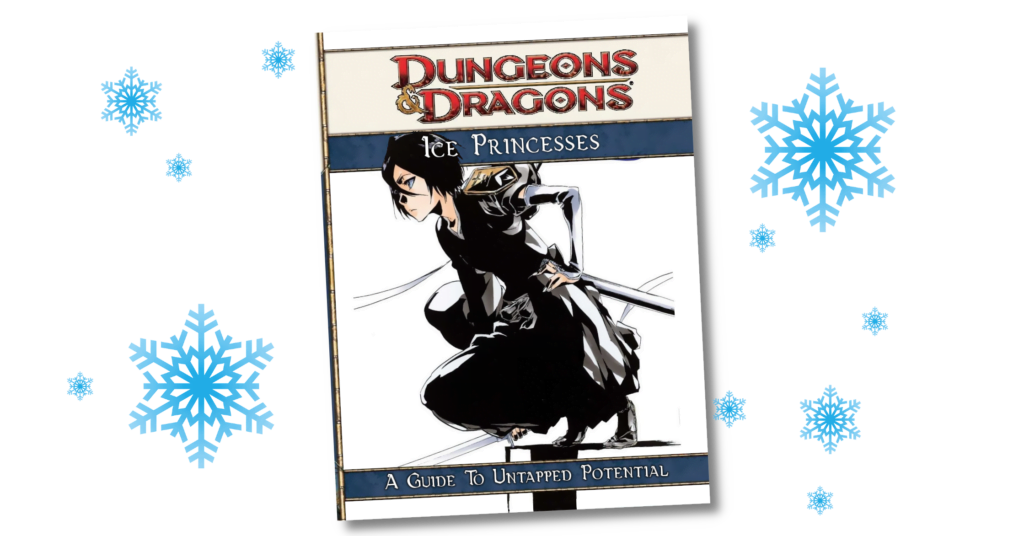
How To Be: May (in 4e D&D)
In How To Be we’re going to look at a variety of characters from Not D&D and conceptualise how you might go about making a version of that character in the form of D&D that matters on this blog, D&D 4th Edition. Our guidelines are as follows:
- This is going to be a brief rundown of ways to make a character that ‘feels’ like the source character
- This isn’t meant to be comprehensive or authoritative but as a creative exercise
- While not every character can work immediately out of the box, the aim is to make sure they have a character ‘feel’ as soon as possible
- The character has to have the ‘feeling’ of the character by at least midway through Heroic
When building characters in 4th Edition it’s worth remembering that there are a lot of different ways to do the same basic thing. This isn’t going to be comprehensive, or even particularly fleshed out, and instead give you some places to start when you want to make something.
Another thing to remember is that 4e characters tend to be more about collected interactions of groups of things – it’s not that you get a build with specific rules about what you have to take, and when, and why, like you’re lockpicking your way through a design in the hopes of getting an overlap eventually. Character building is about packages, not programs, and we’ll talk about some packages and reference them going forwards.
You may remember that we’ve looked, earlier in the year, at the character Rock Howard, from Garou: Mark Of The Wolves. Fight games are rich fodder for this kind of exercise because they so often about what a character is and less about what the character does. Simply put, fight games don’t make much sense.
There’s a scale at work, of course. Some games make more sense, with a deliberate intention to ground the storytelling in something serious. Some games, on other hand, are pretty silly, and don’t really care about how silly they get.
Anyway, Guilty Gear.
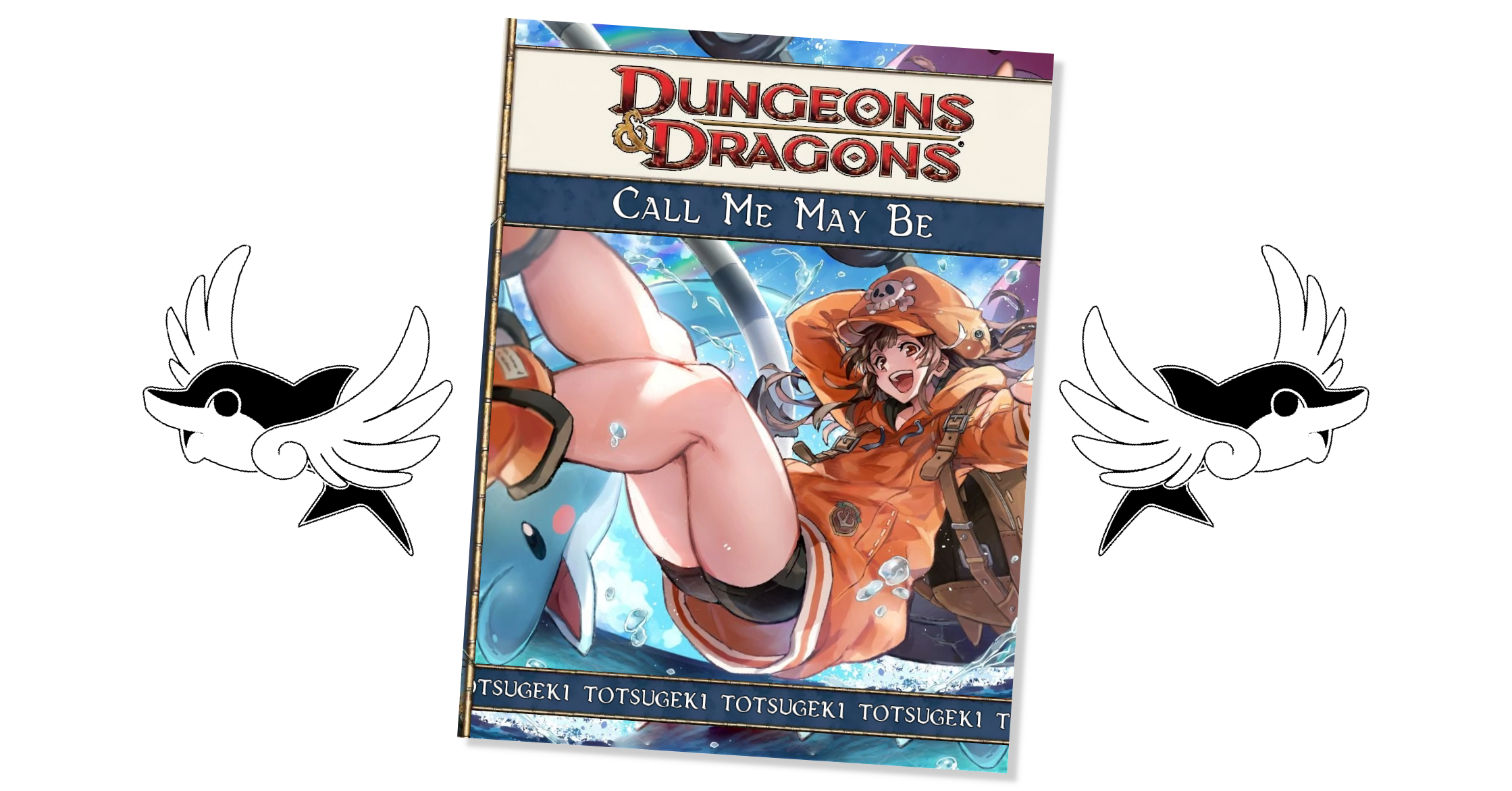
4e: Methods & Practice
Here’s a valuable lesson for tabletop RPG designers of all kinds I want you to learn from 4th edition D&D. I’ve been brewing on it for a while and I think I can summarise it cleanly thus:
Methods & Practices should not be Entangled.
There, that’s it, that’s the tweet.
… And I guess I should explain it more.

Game Brief: The Many Complications of Fogge’s Barrow
I’m running a D&D game right now. Uh, unless something’s gone very wrong, I’ve been running it for some time by the time this guide goes up. But when I make a game I start out by giving people a document, called a Game Brief, that gives them guidance on building characters, and what’s expected of them.
For this game, I knew I had a small party (only three players), because we’d be playing this when our fourth friend was absent from the game. I also knew I didn’t want a huge stake, and wanted it to be much more about something local without big potential impact, so I put it in the mid levels of Heroic. Enough room that players could play experienced characters, but not that they had a veritable tale to them yet.
I’m going to present the brief, as I started on it… and then talk about the complication that followed.
Continue Reading →How To Be: Disney’s Robin Hood (in 4e D&D)
In How To Be we’re going to look at a variety of characters from Not D&D and conceptualise how you might go about making a version of that character in the form of D&D that matters on this blog, D&D 4th Edition. Our guidelines are as follows:
- This is going to be a brief rundown of ways to make a character that ‘feels’ like the source character
- This isn’t meant to be comprehensive or authoritative but as a creative exercise
- While not every character can work immediately out of the box, the aim is to make sure they have a character ‘feel’ as soon as possible
- The character has to have the ‘feeling’ of the character by at least midway through Heroic
When building characters in 4th Edition it’s worth remembering that there are a lot of different ways to do the same basic thing. This isn’t going to be comprehensive, or even particularly fleshed out, and instead give you some places to start when you want to make something.
Another thing to remember is that 4e characters tend to be more about collected interactions of groups of things – it’s not that you get a build with specific rules about what you have to take, and when, and why, like you’re lockpicking your way through a design in the hopes of getting an overlap eventually. Character building is about packages, not programs, and we’ll talk about some packages and reference them going forwards.
This month, I felt it was time to approach the challenge from a different angle, of taking something with an obvious, easy, simple solution and then exploring around that. And for that, we’re going to look at a classic character, a character who’s so well known we don’t even remember we’re referencing him when we reference him. A folk hero, a hero who defined a generation and set thousands of people on their path that would determine the kind of person they’d be.
We’re going to look at Robin Hood.
Specifically, the 1973 Disney’s Robin Hood.
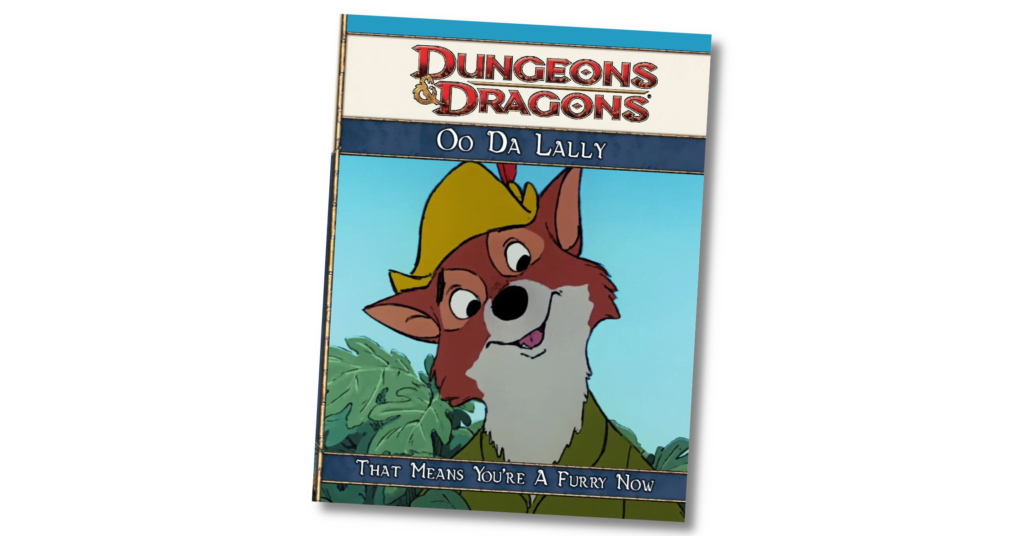
4e: Sneaky Feys
It’s said, that humans learned magic from the gods; some say that humans learned it from studying the universe around them. Some, in the oldest and darkest stories, say that humans learned magic from the fey, because they couldn’t wait to see how badly we fucked it up.
One thing I love about D&D 4e is the way that making a character is pretty simple and robust. Rather than gate things like werewolves and werebears behind layers of power back in third edition, the game finds ways to let you play that straight up, out of the gates. Same with Vampires, and, if you want, you can play all sorts of weird character types out of nowhere.
If you want to play a weirdo, fae-realms inspired fey creature, you have options too! And, of them, the Satyr and Hamadryad, are bad. Fortunately, though, Fox made some better ones, and I’m going to give you some feat support for them!
Now, this is a bit of a different direction in the kind of 4e content I make. This isn’t about something from established books, this is something based on the character heritages for 4th edition that Fox made. It’s going to be about feat support for the Gruuwar, Pooka, and Firbolg heritages she wrote, and put up on The Square Fireball.
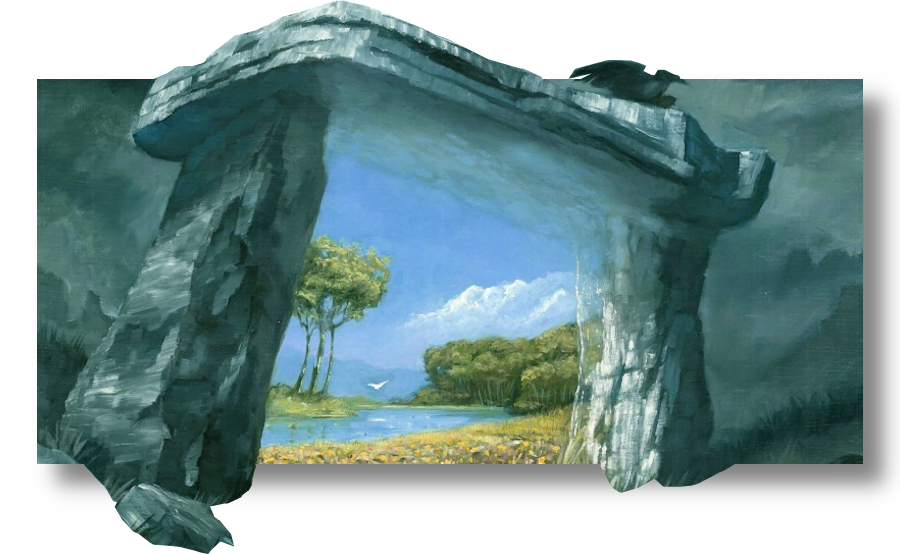
How To Be: Goliath from Gargoyles (in 4e D&D)
In How To Be we’re going to look at a variety of characters from Not D&D and conceptualise how you might go about making a version of that character in the form of D&D that matters on this blog, D&D 4th Edition. Our guidelines are as follows:
- This is going to be a brief rundown of ways to make a character that ‘feels’ like the source character
- This isn’t meant to be comprehensive or authoritive but as a creative exercise
- While not every character can work immediately out of the box, the aim is to make sure they have a character ‘feel’ as soon as possible
- The character has to have the ‘feeling’ of the character by at least midway through Heroic
When building characters in 4th Edition it’s worth remembering that there are a lot of different ways to do the same basic thing. This isn’t going to be comprehensive, or even particularly fleshed out, and instead give you some places to start when you want to make something.
Another thing to remember is that 4e characters tend to be more about collected interactions of groups of things – it’s not that you get a build with specific rules about what you have to take, and when, and why, like you’re lockpicking your way through a design in the hopes of getting an overlap eventually. Character building is about packages, not programs, and we’ll talk about some packages and reference them going forwards.
This month, we’re going to look at a challenging build; we’re going to be looking at a powerhouse of muscle and stone, in the form of Goliath from the Disney series Gargoyles.
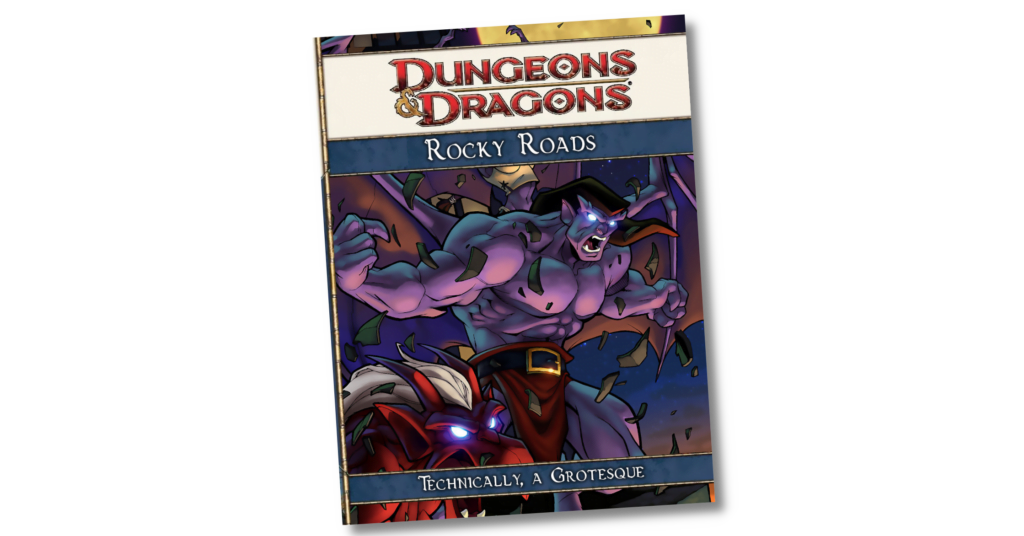
4e: The Swallowers
There are tales told, in the deep and dark places of the world, about vast, floating multi-eyed magical monsters, their minds full of hate, seeing a world of imperfection and foulness that they refuse to abide, wanting to reshape and destroy it all at once. There are tales told about their variations and mutations, things that they see as vulgar but necessary – smaller versions of themselves, foul mutations and permutations.
But there are other variations, ones they don’t mean to make.
Swallowers are chaotic, anarchic creatures, who look like the famously powerful tyrants of the underdark, but sharing none of their ambition and hate. Instead, what they have is curiosity, bubbling up from within as they bounce and float around the world, exploring the world.
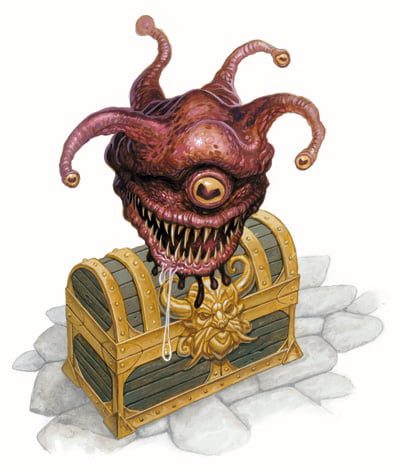
How To Be: Daryun (in 4e D&D)
In How To Be we’re going to look at a variety of characters from Not D&D and conceptualise how you might go about making a version of that character in the form of D&D that matters on this blog, D&D 4th Edition. Our guidelines are as follows:
- This is going to be a brief rundown of ways to make a character that ‘feels’ like the source character
- This isn’t meant to be comprehensive or authoritive but as a creative exercise
- While not every character can work immediately out of the box, the aim is to make sure they have a character ‘feel’ as soon as possible
- The character has to have the ‘feeling’ of the character by at least midway through Heroic
When building characters in 4th Edition it’s worth remembering that there are a lot of different ways to do the same basic thing. This isn’t going to be comprehensive, or even particularly fleshed out, and instead give you some places to start when you want to make something.
Another thing to remember is that 4e characters tend to be more about collected interactions of groups of things – it’s not that you get a build with specific rules about what you have to take, and when, and why, like you’re lockpicking your way through a design in the hopes of getting an overlap eventually. Character building is about packages, not programs, and we’ll talk about some packages and reference them going forwards.
We have a bit of a special one this month: Not a character I know, or am familiar with, but who has been in my life and around me for some time. We’re going to look at the character Daryun from The Heroic Legend of Arslan, a novel series some thirty-five years old, which was reimagined and reinvigorated through the heroic work of Hiromu Arakawa. So, imagine a deep, long-running heroic fantasy war epic, which then had one of the greatest living manga-ka come through and give it a bit of a brush up.
We’re going to talk about a hot prince’s best friend, who he loves so much he was buried with him (but, in a not gay way, if you believe the fandom wiki): Daryun.
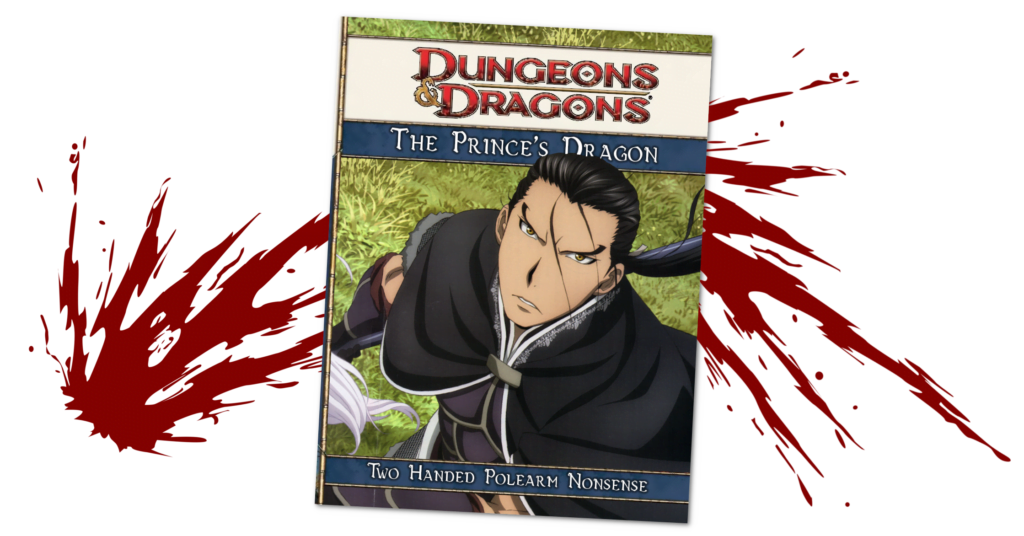
Examining Daryun
Alright, for those of you (us) not aware of this preposterous Battle Hunk, let’s have a look at Daryun, Just Daryan, No Surname, Weird. In the story he’s from, Daryun is this sort of violence elemental poured into the form of a Good Good boy, a gifted horseman and knight who, at the start of the story, suffers unfair punishment because he made a bad choice which, it turns out, was, in fact, a good choice, and the person he opposed was a traitor. As this is a story of empires, just because a decision was dumb doesn’t mean that it gets rescinded, especially because stuff went supremely sideways and kicked off the plot.
What we have to start with then is a disgraced knight who was disgraced for being too right and exiled with his prince who is too great, and how they are going to go be awesome at the rest of the empire.
I’m half kidding.
The first thing and most obvious thing about Daryun is that he’s an absolute nightmare of a combatant. In a setting full of Musou combat nonsense, Daryun is a boss monster. There are chapters of the manga dedicated to showing Daryun wrecking shop. There’s a major plot beat about the first time Arslan has to consider that Daryun can die, at least in the hypothetical. In a story full of people whose job it is to hurt people, Daryun is the Employee of the Month, Every Month, Montherfucker.
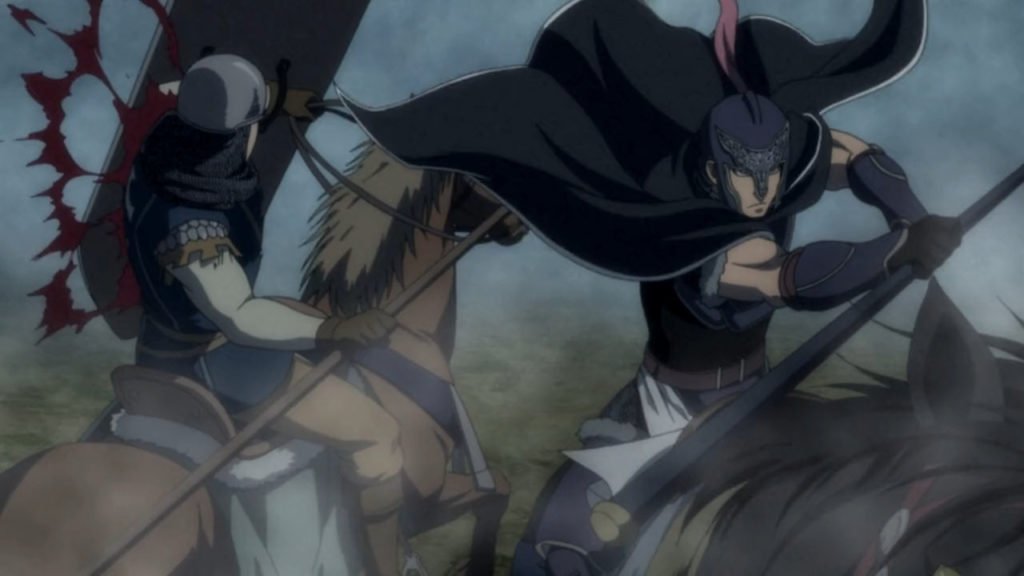
Daryun is a devoted retainer. Focal to his story is the importance he puts on protecting Arslan and enacting his aims. Fortunately for Daryun’s skillset, these aims are grotesque and overwhelming violence. Still, keep that one in mind: Daryun may be very violent and a very capable combatant, but he is also very much focused on protecting Arslan. That puts us pretty squarely towards ‘defender’ territory.
Daryun doesn’t really… do magic? It isn’t that the Arslan setting lacks for magic; there are sorcerers and wizards after all. But Daryun’s very much more about spears and swords and bows and other spears and good lord, there’s blood everywhere. That pushes us away from magical things. We might be able to squeeze in some things that are magical but don’t look like magic.
As far as abilities go, Daryun’s a bit of a risky one. See, he’s not just a combat juggernaut, but he also isn’t stupid, and he’s terrifying. Enemies that hear Daryun is coming to fight them sometimes desert. While there’s a certain greatness to him in general, it’s hard to argue he’s ‘bad’ at any particular ability score. The closest we can get is maybe the idea that he’s a little lacking in the wisdom department because of his intense dedication to Arslan, but since the ideology of how Intelligence, Wisdom and Charisma work can be nebulous, it’s probably best to just assert ‘he’s fine’ in those stakes.
This can be a good thing, of course; it can mean that any of those three mental stats that needs to be good for a build fits. It’s not like your character has to have high stats to convey the right tone, it’s just it’s best to not be markedly bad at things. Have the stats you rely on be the stats that feel right for the character.
Okay, that gives us:
- Physical combat prowess
- Ability to protect someone
- Polearms, swords and bow, if necessary
- He is feared and fearsome
Oh, and, because it’s Pride month, Daryun can’t have a shield. It’s dodge rolls only.
- No shields
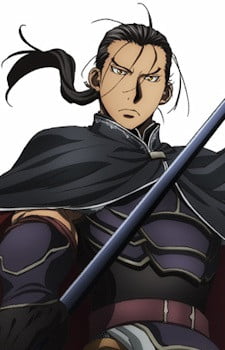
The Essential Daryun
First up: Daryun needs to be a combat beast. It’s funny this article was coming up while the current bubble of 4e Discourse is going on, where it’d be great to do an article about martial disciplines and rituals and all sorts of non-combat stuff characters can do. Instead, nope, we have a character who approaches every problem like it’s a tree made of meat that needs to be cut down and then he proceeds to do it.
Armour wise, Daryun wears heavy armour and while he’s zippy in it (because it’s a manga) you don’t have that luxury. Getting some gear to make yourself tougher and faster is fine, all the standard options for a defender are going to work here. You are going to have your boot slot taken though, for reasons we’ll get to.
Daryun is an archer and a equestrian in the original story (there’s even a funny bit where Arslan tries to use his bow and can’t draw it), but we’re going to focus on the spear build this time. Particularly beacuse the kind of polearm he uses in the manga looks like a Ji, a really cool type of thing that westerners might go ‘kinda a spear’ or ‘kinda a halberd.’ I’m told – by the Wikipedia page I just linked that it’s not really either of those things, but it’s cool and let’s go with that.
It opens the door to one of those odd little strangles of balance in 4th edition, where there is actually one of those points where a DM might go ‘huh, that might be a problem.’ It’s not that the effect is overwhelming, it’s that over time, with enough 4e players, you’re going to notice players gravitating towards it. It was a comment on the character optimisation boards that for a time there, this grouping of feats was the most commonly obtained thing, and it involved multiclassing fighter.
Which is wild.
You hear that? 4e D&D’s most commonly multiclassed option according to the character optimisation nerds was people wanting to be like the fighter.
Fucking beat that with a stick.
Anyway, Polearm Momentum is a feat from Martial Power. What it does is say that whenever you push pull or slide an enemy 2 or more squares, they’re prone at the end of that. When you look at this agnostically, that’s good. Any of your encounter powers that come with a push or a slide will throw your enemies onto their butts, and deprive them of an action on the next turn where they have to get back up from prone. Great. Then you start to think about it more, and you notice it doesn’t care about encounter powers. Or daily powers. It cares about any time you use an attack to push pull or slide.
Like your at will powers.
Like a not-insignificant number of basic attacks.
Like you can do as an opportunity action.
What happens, you may wonder, if you interrupt someone’s turn with forced movement? Well, it can interrupt their actions. Opportunity attacks happen before the thing that triggered them resolved. If an opponent provokes an attack of opportunity from you while moving past you, and your attack knocks them prone, their movement ends and they have to decide what to do after that point. Most of the time, they want to just get up, but then that’s a whole action. They can attack from prone – if they want – at a penalty. That’s pretty good – it means enemies trying to get around or past you are going to risk being knocked over and forced to fight just you.
Tacking that onto a push however, or a slide, means that you can hit someone, knock them two squares away from you and knock them over. You can use this to position opponents where literally nobody is in reach of their attacks, effectively turning off an entire turn from an opponent. That’s pretty strong! Most of the time, their best option is to get up on their own turn and, without many other options, charge someone. If you position yourself right, they might only be able to charge you. This is a lot of battlefield control, and on your own turn, odds are good you can just huck ’em backwards again. It also starts to mitigate combat damage when you throw in the feat Polearm Gamble.
Polearm Gamble lets you make opportunity attacks against someone when they enter a square next to you.
That means if they do get up and charge you, you attack them and throw them backwards again, and prone them again. Their entire turn is spent doing nothing, and you got to attack them.
This is how a single soldier can kill an army – one at a time.
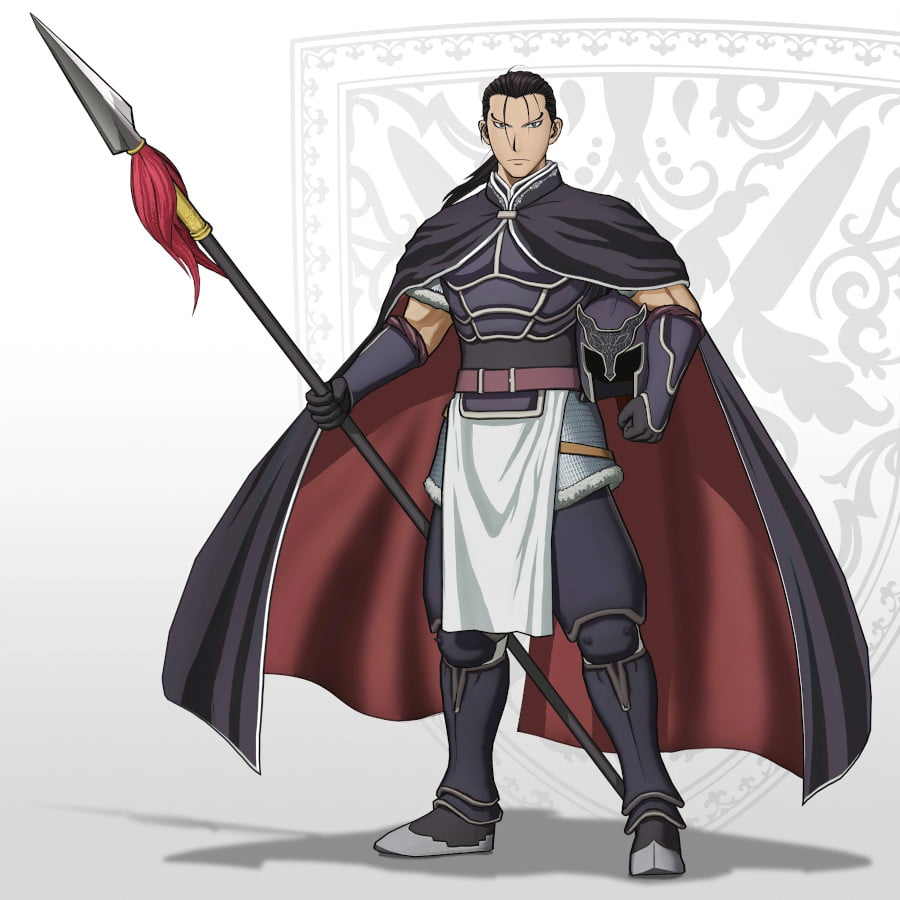
Now, in order to get this kind of effect you do need to draw some pieces together. Particularly, you want a polearm weapon. While there are a lot of options, they can require more feats; the Greatspear gives a +3 proficiency bonus but needs a feat, while the Halberd can stand in for the Ji (I know, I know). If you want to get axe benefits, the halberd will do the trick. Oh and they’re Reach weapons, so you can whack people at range to throw them around and prone them. That’s cool.
You’re also going to want a way to push or slide things for 2 squares with a melee attack that uses a weapon. That’s easy for some classes, tricky for others. Pushing one square is doable (and we’ll talk about it), and then you can augment that push with the magic item Rushing Cleats. These are a pair of boots that increase your pushes and slides by 1 square. That’s the core:
- Polearm Momentum feat
- Basic-attack power that can push or slide 1 square
- Rushing cleats
From there you unlock a lot of other possible things that make this better; for example, if you’re fighting lots of prone enemies thanks to the Polearm Momentum, and you’re using an axe-polearm like a Halberd, you may want to get Headsman’s Chop. You may want Polearm Gamble in Paragon. You may focus on proning, or forced movement, or on polearm stuff.
Also, for all these builds I’m recommending Daryun take the Guardian theme. You just need to ask someone else to provide the slender willowy prettyboy prince for you to always want to protect (happy Pride).
Representing Fear Of Complexity: Knight
This is the simplest possible build. I’m never that wild about the Knight, because while it gives you a lot of simple, straightforward power, it does so by giving you a set of player choices at level 1 that sort of just… last for the rest of the game. The Knight gains basically no benefit, at base, from Dexterity or Wisdom, but that does mean you can focus on the straightforward ‘hit things good’ stats and abilities.
At the really low levels, you can use your stance for a little advantage in damage. Now, you can start out with a race/heritage option that gives you +2 Dex and Wis, and pick up Polearm Momentum at level 1… and do nothing with it. My advice is instead, focus on getting that strength you want as high as possible, use some stat levelling up to push your Dexterity or Wisdom up high enough to qualify for the feat, and wait until level 6 to get Polearm Momentum. As mentioned above, you really want your Rushing Cleats, which you’re unlikely to have access to at level 4.
Okay, out of the box, the knight starts doing the push-people-around garbage at level 1, and it just gets worse. Next!
Representing Fear Of Flexibility: Fighter
The Fighter gives you a lot more choices and a lot more flexibility. It also has to do some chicanery to have a basic attack with a push or slide on it. Now, you can chase up the old standby from the Thor article, with Mark of Storm and a Lightning weapon. That’ll do a fighter (and anyone else really). But even simpler than that is the Fighter Weapon Talent (which gives you a bonus to hit), and then throw in Forceful Weapon Opportunist (which means you push on all opportunity attacks, regardless of the power used to get them).
But the fighter gets to make more with its shifts and slides when it gets rushing cleats, too, because of a lot of different push-pull-slide powers you can pick up as you go. As a reliable At Will, I’d recommend Tide Of Iron, which lets you drag a thing multiple squares – and two or more squares of slide can be the difference between being flanked or not, and it lets you make choke points for your enemies.
Representing Fear Of Fights With Daryun: Battlemind
Alright, so here’s the awkward one. See, the Battlemind doesn’t get an opportunity attack with a push; but it does get a lot of at-wills with pushes. The one I recommend up front is Bull’s Strength, which is both thematically cogniscant with Daryun but also just can turn into an immense whoah that knocks people down in a great big group.
What’s more, the Battlemind gets to build around Constitution, and can get benefits from Wisdom and Dexterity. You will need to multiclass as a fighter. Wrathful Warrior will cover you there, and it also only cares about having a good Constitution. Great stuff!
Now this build is pretty stuffed in Heroic, and it doesn’t get to do the opportunity control until you hit paragon – but once you do, suddenly you just become something terrifying. You’ll want Heavy Blade Opportunity and a Polearm that counts as a polearm and a heavy blade (hiya, Glaive!), but once you do that, you’ll be Bulls Strengthing people around off-turn, teleport around with Lightning Rush and hey, maybe even Brutal Barraging people, as a treat.
Also the Battlemind is just one of the most anime fighters in the game. Melee attacks, barrages of attacks, teleporting to take hits before your ally does, striking someone before they strike you – it’s just such a great class for representing an ‘anime fighter’ character. It’s going to work just fine levelling up, but it’ll really get that Daryun-style Who The Fuck Is Better Than Me coherent violence ball once you start opening up at Paragon.
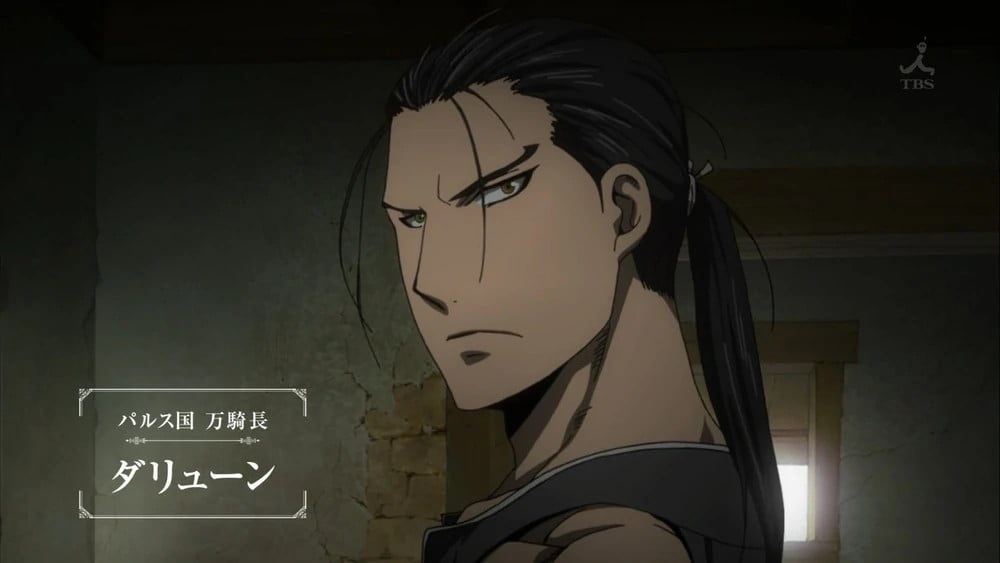
Junk Drawer Options
Now, if you set aside our idea that he has to be a defender you open up a little. The trick is what it opens up. See, Daryun could be a Ranger (you see him fighting with a sword-and-spear at times) and those are generally strong. Warlord, that works too, if you build for a lot of personal attacks and putting yourself at risk. For me, the vibe i get off Daryun is overwhelmingly tough to go with being threatening, so classes like the Rogue and Skald don’t feel like good fits. You can also make the case that a love for his lord, Arslan could be seen as an article of faith, and take him as a Crusader or Paladin, but those classes have a harder time making Polearm Momentum work in Heroic.
The Berserker, if you can handle the theme of Daryun losing his poop over something and flying into a rage, is going to do great with a polearm too. It even has a baseline at-will power for that, Savage Reach.
If you go into Paragon, though, suddenly you open up a lot of options; the Half Elf can take Versatile Master with a power borrowed from another class (like Eldritch Strike). I like that a lot, but it isn’t going to work before Paragon and that’s not how we do here.
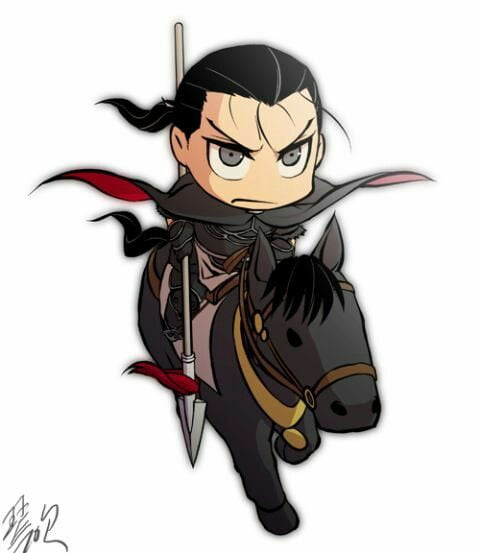
This is a long one, I know! And part of why it’s long is because the Polearm Fighter is so powerful that I wanted to present a meaningful, useful way to access it. But I think it deserves special mention that part of how this works is about people wanting to be a fighter who could reliably knock people back and knock them down, whenever they want – which is interesting, isn’t it? 4th edition giving fighters things to do that include reliable combat abilities they can do at will?
Oh well I’m sure it’s nothing.
5 Dual Wielding 4e Characters
You know what’s cool?
Dual Wielding!
No doubt your favourite professional full-time know it alls have told you that dual wielding is unrealistic and bad and sucks and deprives you of a shield, but my counterpoint is shut up nerd. And when I’m thinking about extremely cool things where the realism doesn’t matter, I think about Dungeons & Dragons: 4th Edition–
Which is the best edition.
Here then are five different ways you can wield it both ways:
Continue Reading →How To Be: Illidan Stormrage (In 4E D&D)
In How To Be we’re going to look at a variety of characters from Not D&D and conceptualise how you might go about making a version of that character in the form of D&D that matters on this blog, D&D 4th Edition. Our guidelines are as follows:
- This is going to be a brief rundown of ways to make a character that ‘feels’ like the source character
- This isn’t meant to be comprehensive or authoritive but as a creative exercise
- While not every character can work immediately out of the box, the aim is to make sure they have a character ‘feel’ as soon as possible
- The character has to have the ‘feeling’ of the character by at least midway through Heroic
When building characters in 4th Edition it’s worth remembering that there are a lot of different ways to do the same basic thing. This isn’t going to be comprehensive, or even particularly fleshed out, and instead give you some places to start when you want to make something.
Another thing to remember is that 4e characters tend to be more about collected interactions of groups of things – it’s not that you get a build with specific rules about what you have to take, and when, and why, like you’re lockpicking your way through a design in the hopes of getting an overlap eventually. Character building is about packages, not programs, and we’ll talk about some packages and reference them going forwards.
Now, are you prepared?
No.
No, you are not prepared.
We’re going to talk about how you can become Illidan Stormrage.
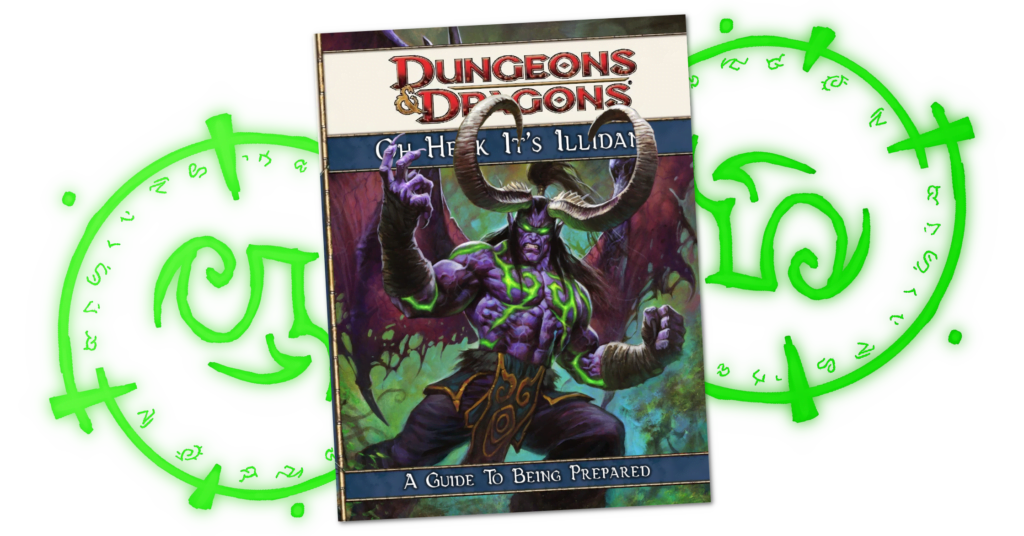
4e: Mind Control
Content Warning: I’m going to discuss some mind control stuff in ways that violates consent. Not any specific outcomes from that, but if you find the whole vibe icky, that’s what this is about.
Also, other, I guess, content warning: This isn’t about the horny topic of mind control, so if that’s the vibe you’re hoping for, sorry?
Rather what I want to talk about here is the way Dungeons & Dragons uses Mind Control across its multiple iterations and how, as tends to happen when I talk about it, 4th Edition did it in the best way.

4e: The Ardent
I write a fair bit about 4th edition D&D. There’s at least one article a month, with the How To Be series, and I think they’re lots of fun. They’re exercises in character construction, working from a character aesthetic and trying to find a way to make that fit in the power boundaries and existing options of 4th edition D&D. Part of why I like to do this is to attack the idea that character creation in 4e was boring.
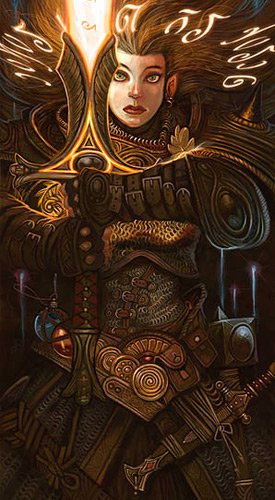
Stil, there are some things that are just… very much from D&D. They’re just things that fit within the universe of D&D as it is, and don’t really translate well to other sources. One such class is the Ardent. The Ardent is a psionic leader; it does team support, healing and buffing and positioning, but powered by the power of the mind.
Psionics in D&D has a weird place, because for some people (like me) it feels like a clear intrusion of science fiction into the fantasy landscape of D&D and therefore makes all the arcane and divine importance of magic as a discipline less important, and for some people (like me, now) that’s 100% correct and rules. Complaints about psionics from back in the day tend to be about how the system was broken not about how the system broke the fiction of the universe after all. Psionics has come to be a favourite system because it tends to be contained in a way that magic isn’t. Magic gets expanded constantly, while there’s an understanding that the psionic system is going to get a limited amount of space, and the psionic classes tend to get a small number of tools they need to make hte most out of. That creates a depth of mastery, where you want to make choices that give you a toolkit you then have to maximise, rather than the disappointing feeling of a wizard’s infinitely wide toolkit, or a sorcerer’s maximally efficient one. It strikes a middle space – and it stands apart from the wizard.
The Ardent takes this idea space and looks at psionics as a way to express the self. It is literally a romantic class (though no Ardent I’ve played has ever had a successful romance) – a class who can use their feelings, their love, their rage, their will to succeed, their excitement at avoiding an attack, and turn that into a tangible force where they can use it to punch an enemy in the face. I love this stuff – I love the idea of a literal avatar of your own feelings. It’s like the thrill of a cleric, where your ideology drives your actions, but you don’t have to have a Dad who is also a Cop on hand.
Ardents use weapons; Ardents wear armour. I like that. These are both things that will cost your character somewhat, but they get you to have a big physical expression of what kind of person they are in their aesthetic. Robes tend to be robes – but armour can look like a lot of different things. Using an axe or a hammer or a polearm or a sword – they also express different ideas. Plus, weapons have a big space of fun synergies that you can pick up if you want to find something interesting to do with your feats, but also don’t demand it.
Ardents are a Charisma-first class. That is, you make attack and damage rolls with your charisma. I wrote about them a while back, about how you can be hot and hit people with your hotness, which I still find fun. Charisma as a way to express a driven character who, whether or not they have social anxiety or stress out over public interactions, can use the force of how they feel to change the world. That’s cool!
Also, it’s a leader. I like playing defenders, because they get to be tough and I can make a big, tangible showing of what good I am contributing. I like protecting my friends. I get some of the same with the leader’s job – making people better at what they do, contributing to their wellbeing, and, with the right build, absolutely wielding the strikers in the group like a bloody blunt instrument.
They get this power? Forward thinking cut. You can fire it off in three versions:
- Hit someone. Your ally next to you gets a bonus to hit rolls. You can do this when you charge.
- Shift 1, charge, then you can hit someone, and an ally next to you gets a bonus to hit rolls.
- One or two Allies you can see can each charge creatures other than the target as a free action, with a bonus to damage equal to your con mod.
Now that, that escalated quickly.
Being able to charge in quick for free, as an at will power? that’s grand. The boost being until your next turn means you can charge next to a tank, stand in their defensive space, and watch as the bonus applies to all their attacks of opportunity or mark punishment. That power, on its own, is fine. The second version lets you shift away from someone holding you in place, and then charge off away from them, to join another ally. That’s also great, a tool you want in the toybox.
The third version is fucking nova gas.
It can be hard to concentrate these attacks – you may notice this means you, the Ardent, charge at a minion or buddy next to the villain, and you throw two of your allies at the villain as a free action so they start their turns mixing it up with them. You can use this to deploy a defender into the middle of a bunch of enemies.
Oh and did I mention that you give pepole a bonus to damage rolls based on how many attacks of opportunity they provoke?
And that this is one power?
And that you have other stuff you can do, including a conga line power where you pinball an enemy around between all your allies and let them all get an attack in?
I think about this a lot when I think about this class. It’s very D&D, but it’s also this very beautifully Tactics Game at the same time. It’s a game that lets you play out the fantasy of being a battlefield commander, inspiring and invigorating your allies. It’s so perfect for a lot of things I want out of characters I play.
Oh, I have no doubt that I’ll be able to find some builds in the future that use the Ardent. I like it a lot, and there are some characters who can probably be represented by a physically violent but emotionaly driven, armoured weapon wielder. I mean if she didn’t have such a loud ‘hit it harder’ theme, Chandra Nalaar could have done it.
How To Be: Rock Howard (In 4E D&D)
In How To Be we’re going to look at a variety of characters from Not D&D and conceptualise how you might go about making a version of that character in the form of D&D that matters on this blog, D&D 4th Edition. Our guidelines are as follows:
- This is going to be a brief rundown of ways to make a character that ‘feels’ like the source character
- This isn’t meant to be comprehensive or authoritative but as a creative exercise
- While not every character can work immediately out of the box, the aim is to make sure they have a character ‘feel’ as soon as possible
- The character has to have the ‘feeling’ of the character by at least midway through Heroic
When building characters in 4th Edition it’s worth remembering that there are a lot of different ways to do the same basic thing. This isn’t going to be comprehensive, or even particularly fleshed out, and instead give you some places to start when you want to make something.
Another thing to remember is that 4e characters tend to be more about collected interactions of groups of things – it’s not that you get a build with specific rules about what you have to take, and when, and why, like you’re lockpicking your way through a design in the hopes of getting an overlap eventually. Character building is about packages, not programs, and we’ll talk about some packages and reference them going forwards.
It’s April, it’s Talen Month, and that means we’re going to talk about a character I’ve wanted to talk about for a long time, and a character who I have a deep appreciation for. There’s not a lot of characters that fit in that mould and work well with 4th Edition’s heightened adventure reality, but when I had the idea to tackle this character, I did so with full and wholehearted knowledge that damnit, I wanted to take care of this character in my month.
We’re going to talk about how you can become Rock Howard.
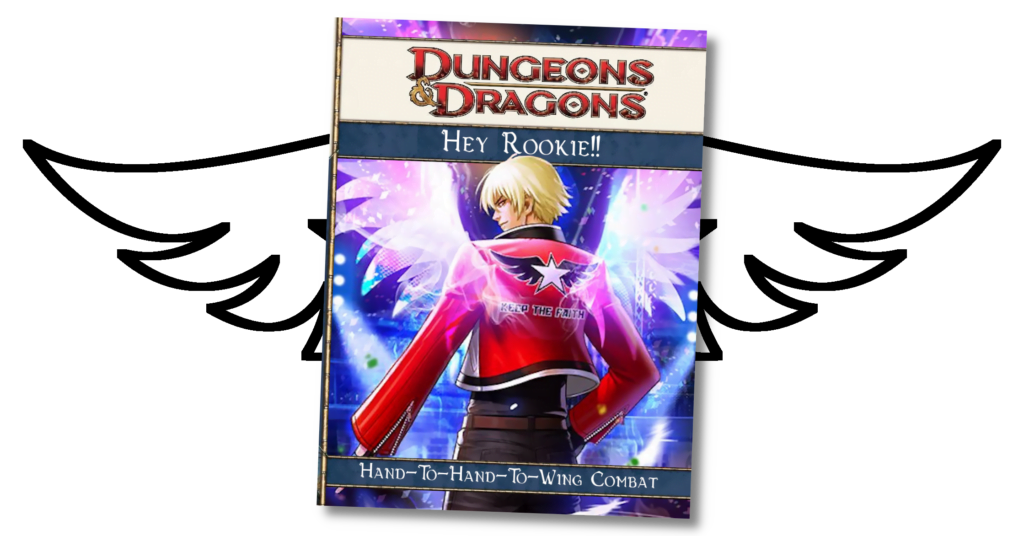
How To Be: Edelgard von Hresvelg (In 4E D&D)
In How To Be we’re going to look at a variety of characters from Not D&D and conceptualise how you might go about making a version of that character in the form of D&D that matters on this blog, D&D 4th Edition. Our guidelines are as follows:
- This is going to be a brief rundown of ways to make a character that ‘feels’ like the source character
- This isn’t meant to be comprehensive or authoritive but as a creative exercise
- While not every character can work immediately out of the box, the aim is to make sure they have a character ‘feel’ as soon as possible
- The character has to have the ‘feeling’ of the character by at least midway through Heroic
When building characters in 4th Edition it’s worth remembering that there are a lot of different ways to do the same basic thing. This isn’t going to be comprehensive, or even particularly fleshed out, and instead give you some places to start when you want to make something.
Another thing to remember is that 4e characters tend to be more about collected interactions of groups of things – it’s not that you get a build with specific rules about what you have to take, and when, and why, like you’re lockpicking your way through a design in the hopes of getting an overlap eventually. Character building is about packages, not programs, and we’ll talk about some packages and reference them going forwards.
Now this month, we’re going to return to How To Be’s roots, and once more we’re looking at a character from Fire Emblem: Some Number Of Houses. Yes, it’s the gal who’s Horny For Priest Murder (And For Other Reasons), the Look Up Other Reasons People Like Her, the One, the Only: Edelgard von Not Pronouncing That!
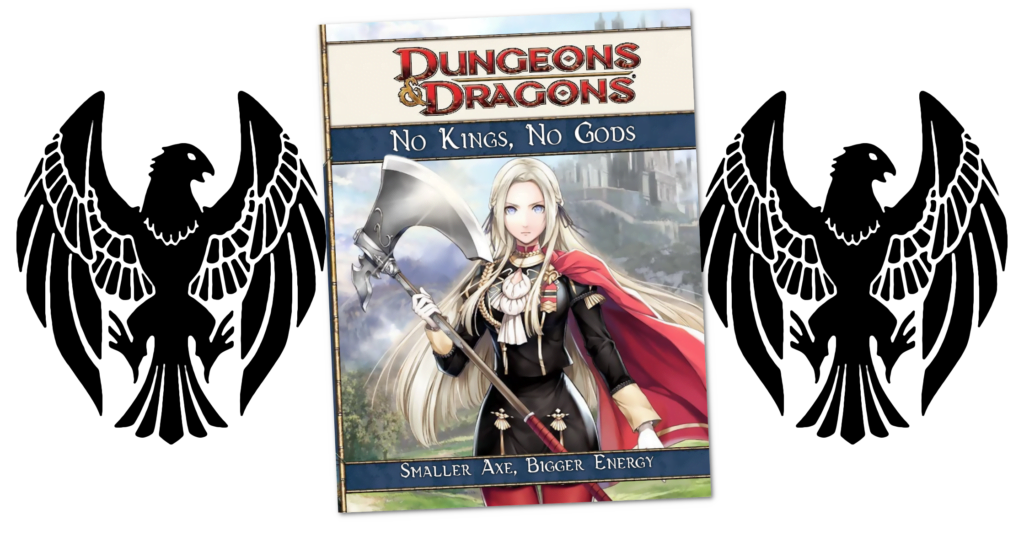
4e: The Hindren
Hindren are a type of cervitaur (‘part deer, part-humanoid, with four legs and two arms’) people you can meet in the indie videogame Caves of Qud. They’re originally a fan creation by indie bespoke curio crafter Caelyn Sandel, before they were implemented in the game proper in part thanks to the efforts of new Caves of Qud writer Caelyn Sandel, which meant they were present in the game to be streamed by Grahu-Rubufo, the Caves of Qud vtuber (voice acted by Caelyn Sandel).
Here, in this article here, is a version of the Hindren that you can bring to the table in your D&D games, as long as you’re playing 4th edition and have a DM that’s understanding about gay deers. Why now? Why am I doing this? Because it’s someone‘s birthday soon, and she’s lovely, and I like what she does.
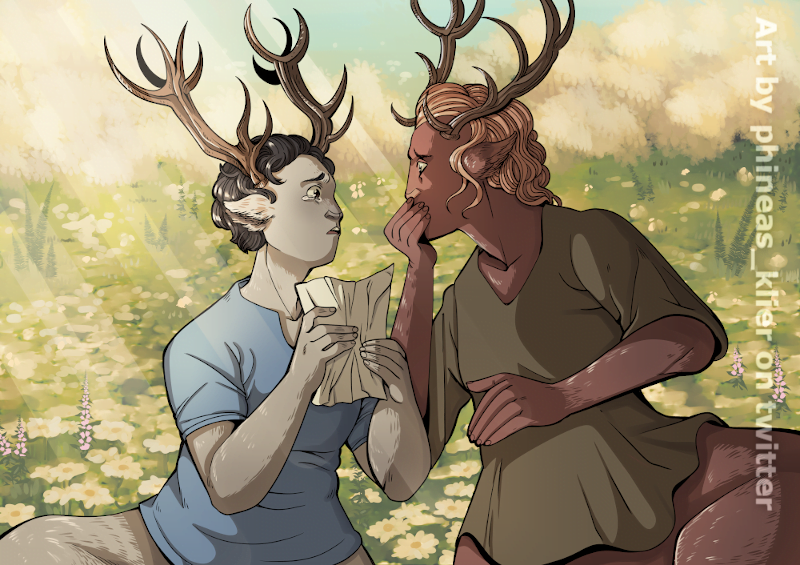
How To Be: Ukyou Kuonji (In 4E D&D)
In How To Be we’re going to look at a variety of characters from Not D&D and conceptualise how you might go about making a version of that character in the form of D&D that matters on this blog, D&D 4th Edition. Our guidelines are as follows:
- This is going to be a brief rundown of ways to make a character that ‘feels’ like the source character
- This isn’t meant to be comprehensive or authoritive but as a creative exercise
- While not every character can work immediately out of the box, the aim is to make sure they have a character ‘feel’ as soon as possible
- The character has to have the ‘feeling’ of the character by at least midway through Heroic
When building characters in 4th Edition it’s worth remembering that there are a lot of different ways to do the same basic thing. This isn’t going to be comprehensive, or even particularly fleshed out, and instead give you some places to start when you want to make something.
Another thing to remember is that 4e characters tend to be more about collected interactions of groups of things – it’s not that you get a build with specific rules about what you have to take, and when, and why, like you’re lockpicking your way through a design in the hopes of getting an overlap eventually. Character building is about packages, not programs, and we’ll talk about some packages and reference them going forwards.
Well, we’ve done some odd stuff with this section, some big ideas about maximising specific character quirks and hitting particularly niche interests like a transforming robot dinosaur, but what if your wants are more hey, what can I do with this simple basis? And, it seems that this month is full of references to Ranma 1/2 and twitter voted on it, and so, here we go, a return to Ranma 1/2 as an option: Ukyou Kuonji.
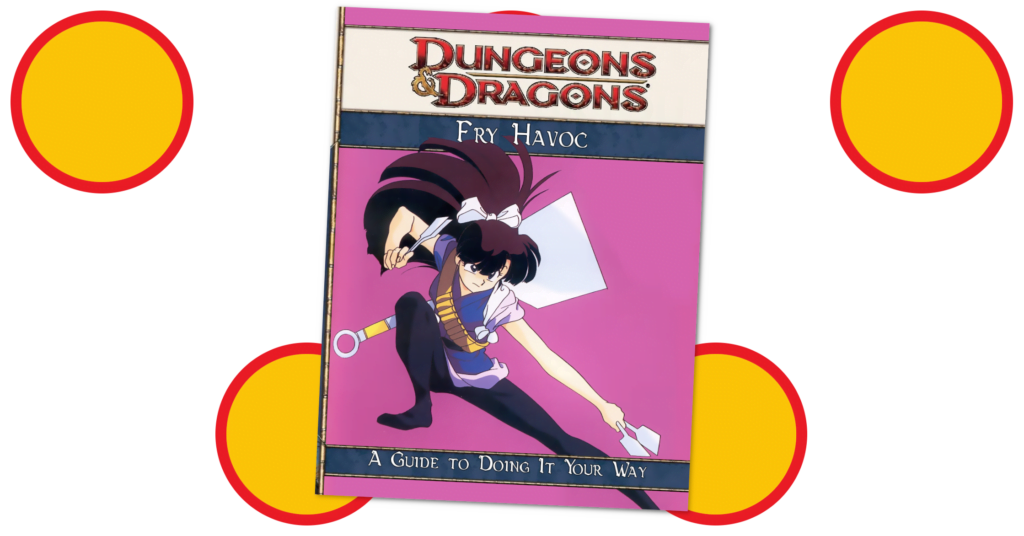
4e: The Passionguard (And A Kickstarter Promo!)
In 4th Edition D&D, a starting character has three large layered choices for making a character more conveniently. You have their Ancestry (“race”), you have the toolset for solving problems they have for their basic skills (“class”), and then you have the little third layer, the layer where you get to refine those two things with extra stuff that isn’t worth a lot, but does bring with it some inherent difference: the theme.
For me, themes are a secret sauce component of 4th edition D&D. They’re a place that you can fill out things a character should be able to do, small bonuses that aren’t necessarily as uniformly available. If you have a striker who you think of as needing to be able to shield someone, one person in particular, the Guardian theme is there for you. If you want to add some sneaky stabbiness to a straightforward fighter, there’s a Yakuza. I’ve used the Werewolf and Werebear for a lot of stuff, and there are sometimes whole themes that carry a concept that are more important than the other two choices to make sure you can hit a specific feel.
But also themes aren’t ironclad, either. Some are very specific, like membership in a specific organisation and some are very general. Themes feel to me like seasonings: The biggest problem we have with Themes right now is not enough of them and not varied enough. Themes are there to do the job of helping you cement some element of your character design that needs to grow, but also can’t be done with the slow progress of feats.
And while working on this, I found this.
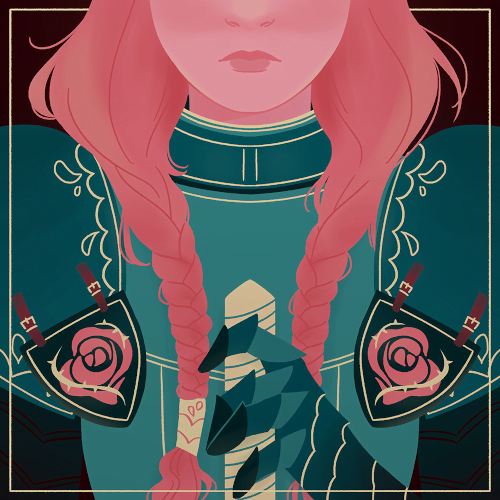
This artwork rules. I have this problem when I see art and because I create in game spaces, I immediately think ‘hey that’s rad, I’d love to make a game that looks like that.’ And you can’t, that’s a thing, you can’t just take art you like and use it, even though people can just take rules they like and use them. Seems a bit rude on me, I guess. But anyway, point is, I saw this and went: Damn, that gives me ideas.
Thing is, this art is for something. It’s art from 2018 for a Zine called Dames. And that zine has an iteration, currently on Kickstarter, right now. With that in mind, here’s a link to this Kickstarter, and I recommend you check it out and see if you like it. It’s a zine full of knightly ladies. That looks cool!
And now, inspired by this bangin’ artwork, I’d like to present you with The Passionguard.
How To Be: ME GRIMLOCK (In 4e D&D)
In How To Be we’re going to look at a variety of characters from Not D&D and conceptualise how you might go about making a version of that character in the form of D&D that matters on this blog, D&D 4th Edition. Our guidelines are as follows:
- This is going to be a brief rundown of ways to make a character that ‘feels’ like the source character
- This isn’t meant to be comprehensive or authoritive but as a creative exercise
- While not every character can work immediately out of the box, the aim is to make sure they have a character ‘feel’ as soon as possible
- The character has to have the ‘feeling’ of the character by at least midway through Heroic
When building characters in 4th Edition it’s worth remembering that there are a lot of different ways to do the same basic thing. This isn’t going to be comprehensive, or even particularly fleshed out, and instead give you some places to start when you want to make something.
Another thing to remember is that 4e characters tend to be more about collected interactions of groups of things – it’s not that you get a build with specific rules about what you have to take, and when, and why, like you’re lockpicking your way through a design in the hopes of getting an overlap eventually. Character building is about packages, not programs, and we’ll talk about some packages and reference them going forwards.
You know, last year we did a bunch of characters who could be seen as fitting the genre of a combative adventurer reasonably well, and maybe it’s time to try some stuff that’s a bit more weird. With that in mind, let us reach wide, with our tiny, tiny arms, and look at ME GRIMLOCK!

4e: The Paladin’s Plight
Pacing is important in games. It’s a lesson that can be difficult to learn without trial and error, and when your game is big and playtesting sessions are slow and about lots of varied choices it’s entirely possible that you have a pacing problem that only a small number of people are ever going to notice.
In 4e D&D, the Paladin was one of those characters with a rough pacing problem. If you build one, now, using any of the major building tools available, you’re going to see that when you hit level 2, you have to pick one of the utility powers available at that level and
Woo.
It is a spicy one.
Continue Reading →How To Be: The Covers Of 2020
It has now been a full year of How To Be. These articles are fun to make, they’re interesting to play around with, and I have more of them ready to go, so I fully expect to keep doing them. What I do think, though, from all of those articles I’ve made this year, I was frustrated to find that Twitter and Jetpack, two of the ways I promote this blog, don’t present my hilarious book covers in the thumbnails consistently. That means it’s possible that you might not see these book covers and may not have gone looking for them.
Also, since it’s December, and I am tired and you are tired and everyone is tired, how about I show off this year’s How To Be covers, and let you check them out now, as some long-form throwback reading of the rest of the blog.
Yeah?
Yeah.
Yeah.
How To Be: Wolf Queen Nailah (In 4e D&D)
In How To Be we’re going to look at a variety of characters from Not D&D and conceptualise how you might go about making a version of that character in the form of D&D that matters on this blog, D&D 4th Edition. Our guidelines are as follows:
- This is going to be a brief rundown of ways to make a character that ‘feels’ like the source character
- This isn’t meant to be comprehensive or authoritive but as a creative exercise
- While not every character can work immediately out of the box, the aim is to make sure they have a character ‘feel’ as soon as possible
- The character has to have the ‘feeling’ of the character by at least midway through Heroic
When building characters in 4th Edition it’s worth remembering that there are a lot of different ways to do the same basic thing. This isn’t going to be comprehensive, or even particularly fleshed out, and instead give you some places to start when you want to make something.
Another thing to remember is that 4e characters tend to be more about collected interactions of groups of things – it’s not that you get a build with specific rules about what you have to take, and when, and why, like you’re lockpicking your way through a design in the hopes of getting an overlap eventually. Character building is about packages, not programs, and we’ll talk about some packages and reference them going forwards.
And this month, before we talk about our subject, though I mean she’s in the subject of the blog post that you just clicked on so I mean what are we going to cover, suddenly a swerve and it’s going to be about trotting out pairs of characters that can be Bert and Ernie from Sesame Street. But see, this marks our twelfth How To Be, and it also marks the first year of this feature. It’s fun! I’ve enjoyed doing that!
And because variety is important to me, we’re going back to Fire Emblem. And maybe, being you’re one of my friends, you might be thinking that yes! I’m going to bring up ya girl Edelgard, who is… very, very similar to Hilda.
No, we’re talking about Nailah, from Fire Emblem: Radiant Dawn. And we’re talking about her because she’s cool, and she can do interesting things, and most importantly, because Fox likes her. I started with one of Fox’s favourite franchises, and then with a character she kinda didn’t like one way or the other? Terrible form on my part.
Let’s look at a Wolf Queen.
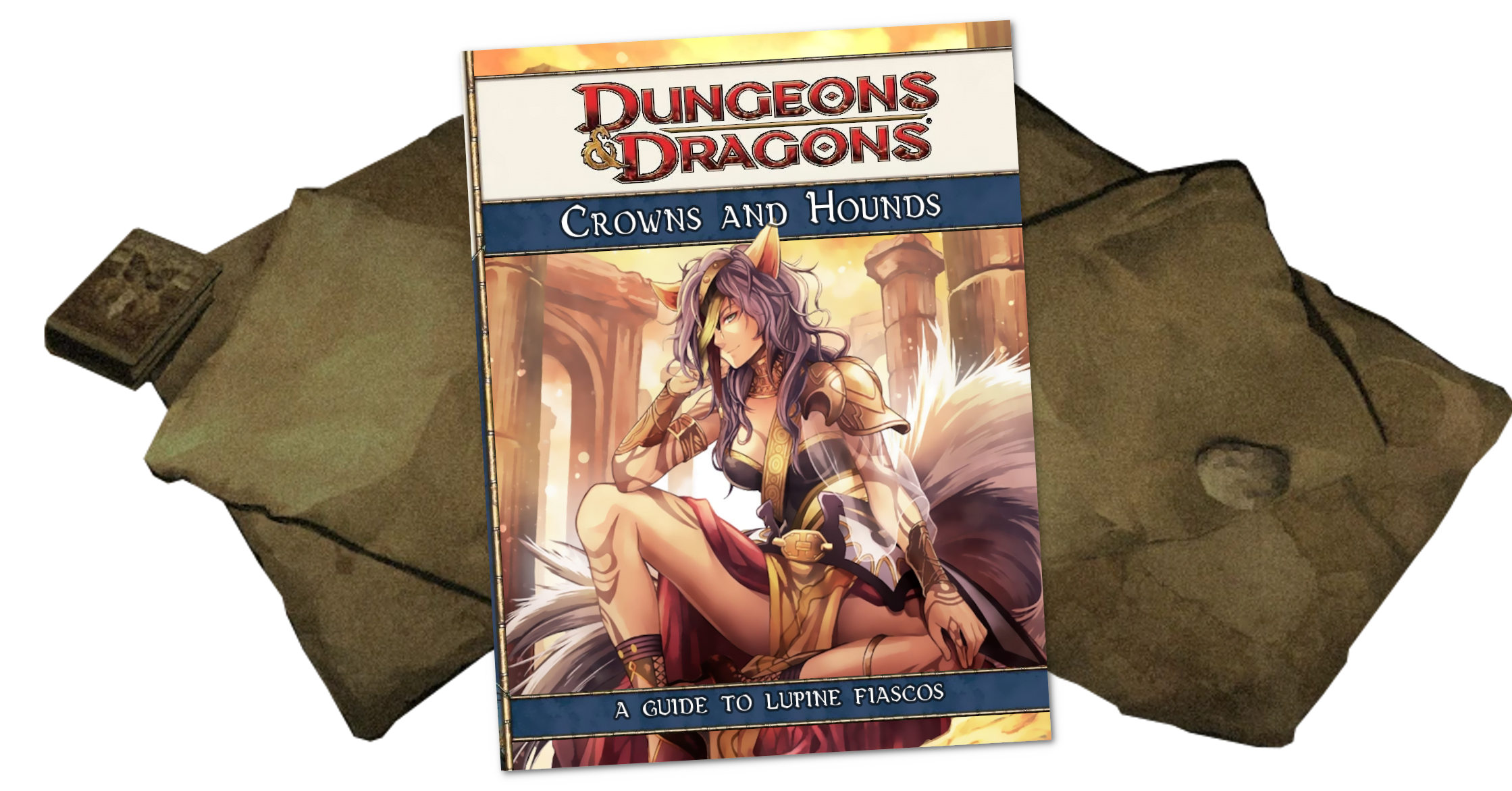
How To Be: The Castlevania Gang (In 4e D&D)
In How To Be we’re going to look at a variety of characters from Not D&D and conceptualise how you might go about making a version of that character in the form of D&D that matters on this blog, D&D 4th Edition. Our guidelines are as follows:
- This is going to be a brief rundown of ways to make a character that ‘feels’ like the source character
- This isn’t meant to be comprehensive or authoritative but as a creative exercise
- While not every character can work immediately out of the box, the aim is to make sure they have a character ‘feel’ as soon as possible
- The character has to have the ‘feeling’ of the character by at least midway through Heroic
When building characters in 4th Edition it’s worth remembering that there are a lot of different ways to do the same basic thing. This isn’t going to be comprehensive, or even particularly fleshed out, and instead give you some places to start when you want to make something.
Another thing to remember is that 4e characters tend to be more about collected interactions of groups of things – it’s not that you get a build with specific rules about what you have to take, and when, and why, like you’re lockpicking your way through a design in the hopes of getting an overlap eventually. Character building is about packages, not programs, and we’ll talk about some packages and reference them going forwards.
Alright, let’s look at these three.
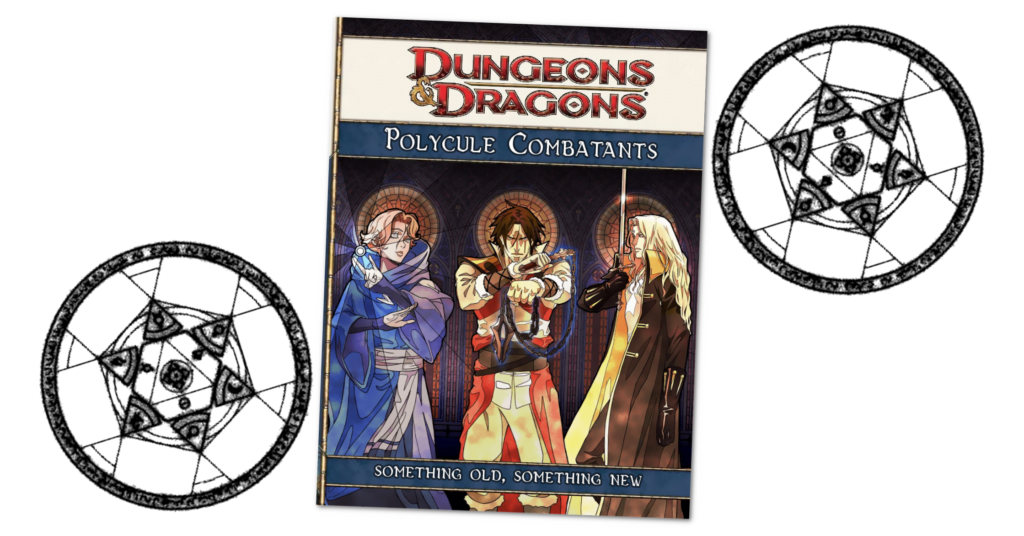
5 Ways To Be Cosmically Horrifying in 4E D&D
It is easy perhaps to forget that TTRPGs are a fundamentally creative space. In some games, especially the more modern indie style of TTRPG, characters are often handed a role that really paints the way they should feel, a characterisation that is in some cases extremely specific, like you’ll see in PBTA games. In D&D, there’s a lot of ways in recent days that flavour has swung towards specificity, which can limit the kinds of creativity you can express.
4e D&D is a game system that deliberately tries to leave a lot of your flavour up to you. Last year I talked about some character options that let you be horrifying heroes. This year, we’re going to do that again, but instead of gothic horror, we’re going to look at ways to do cosmic horror with your character that swings a big axe and saves the day.
Cosmic horror in this case refers to the horror felt at the boundaries between human agency and universal indifference. Cosmic horror can be felt in a very mundane, normal moment of life when you look up at the sky and realise that there is more that exists that you’ll never see, that the universe is old in a scale that you will never understand and will live on longer than you will ever be able to conceive, and that these two details make you a nothing of a blip between nothing blips. When we talk about cosmic horror as she is shown in media, it’s often about trying to show you those points of interface: Of the horror that Lovecraft himself said,
“Now all my tales are based on the fundamental premise that common human laws and interests and emotions have no validity or significance in the vast cosmos-at-large.”
The horror of the Cosmic is not the threat of Gothic horror. It is the immense indifference of an uncaring, infinite emptiness.
Continue Reading →How To Be: Tier Halibel (In 4e D&D)
In How To Be we’re going to look at a variety of characters from Not D&D and conceptualise how you might go about making a version of that character in the form of D&D that matters on this blog, D&D 4th Edition. Our guidelines are as follows:
- This is going to be a brief rundown of ways to make a character that ‘feels’ like the source character
- This isn’t meant to be comprehensive or authoritive but as a creative exercise
- While not every character can work immediately out of the box, the aim is to make sure they have a character ‘feel’ as soon as possible
- The character has to have the ‘feeling’ of the character by at least midway through Heroic
When building characters in 4th Edition it’s worth remembering that there are a lot of different ways to do the same basic thing. This isn’t going to be comprehensive, or even particularly fleshed out, and instead give you some places to start when you want to make something.
Another thing to remember is that 4e characters tend to be more about collected interactions of groups of things – it’s not that you get a build with specific rules about what you have to take, and when, and why, like you’re lockpicking your way through a design in the hopes of getting an overlap eventually. Character building is about packages, not programs, and we’ll talk about some packages and reference them going forwards.
This month, we’re going to dive into the world of the dead and look to the Queen of Hueco Mundo by the most powerful shounen anime right, the right of default, the underboob to Matsumoto’s cleavage well, Tier Harribel.

4e D&D: Marks Are Great
A common criticism of 4th Edition D&D is that at its root, it was good at combat, and therefore, everything in the game, is in service of those combat rules. One example given, is that in 4th edition D&D, there’s the mark system, which turns any kind of player choices manipulating enemy behaviour is turned into a simple reliable mechanic and the player doesn’t need to think about it to engage it, and that this is bad.
This is of course, a stupid position because I introduced it up front so I could get you on my side with a comical twist. Of course I think marks are good, and that’s in part because I think the first half of that argument is kinda a bad faith argument. If you think 4th edition D&D is only combat mechanics, it tends to suggest you haven’t really cracked the books. I could talk about how the nature of the game is that good guides for the creation of narrative don’t need lots of space, and convenient reference text for combat entities does, and we’re back at talking about rainbow tables and storage versus process, but whatever.
The mark system in 4th edition D&D is a blatantly tactical gameplay mechanic.
And I love it.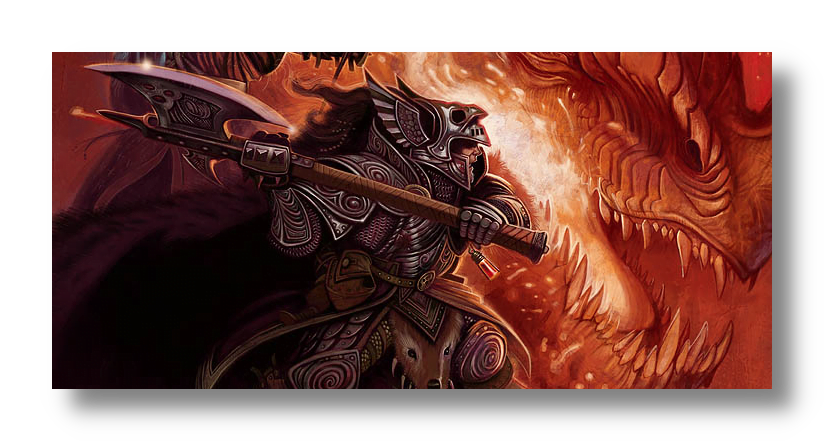
If you’re not familiar, marks are a system that all the characters with the classification ‘defender’ – you might know it as ‘tank’ or ‘blocker’ or ‘guardian’ – get some ability or other that lets them impose the status of marked on enemies. Marks have a few standard rules; specifically, when you have the marked status, the person who did mark you matters. When you’re marked, you suffer a -2 penalty to attack rolls on attacks that do not include the thing marking you. That’s it, at base.
This system is implemented in a lot of different ways; Wardens can mark everyone around them as a free action, but they have to choose when in their turn they do it, which can make for some tactical choices about where and how you position yourself. Fighters mark everyone they attack, whether or not they hit, which means they care about doing lots of incidental attacks, and view area effect or multi-target attacks as a form of control. Paladins have two different marks – one which happens on specific attacks, and one which requires them to remain near the subject. There are more of course, but just these three examples present the mark as a tool where the player can treat the battlefield in terms of their impact on it; monsters have a reason to want to avoid them, and they have a way of controlling monster behaviour. Marks don’t stack – the most recent mark over-writes the other ones.
It’s not just the defenders who can use marks themselves – because it’s a standard mechanic, you can then have other characters use them. For example, you can make a fragile character get a risky power that marks an enemy, which means that suddenly, you’re a high priority target and it makes it harder for the tank to keep that enemy on them. Another option is a support character who can make another character mark something – so you could play a psion, that says ‘hey, enemy, you are now marked by the tank.’ These are interesting options. And you can even use it on enemies – Sometimes a skeleton warrior may have the rules text ‘Deals 1d8+5 damage, and the target is marked.’ And that right there is a simple mechanic that suggests that the enemy is doing what it can to try and force you to focus on it.
Now why are they considered bad?
The idea seems to be that if marks just work, players don’t have to work to roleplay their characters being visibly fearsome or expressing themselves in the world around them so the DM will make monsters behave in a way players want to manipulate. That’s something that sounds compelling if you are, like me, an amazing roleplayer who’s great at commanding attention and capable of convincing DMs. But there are lots of players who want to play a showy, ostentatious asshole of a tank who isn’t actually that great at one-liners or showy, ostentatious violence in description.
This is a false idea, in my opinion. The whole point of Marks as a system is that it’s designed to make something in the game that should work work reliably, rather than make it prone to the whims of the player. It’s not as interesting if your character can or can’t maintain enemy attention based on your ability to say something rude or shocking or clever in another language, but it is interesting if you’re able to make choices about where you stand and what targets you care about.
It’s also something about being in fights. If you’ve never been in a fight, it might surprise you to know that there are ways to fight that make ‘disengaging’ from the fight actually hard, and it’s not because you can make fun of people, it’s because of stances and reach and position.
I think Marks are great, and part of why they’re great is because they reduce the friction of what the game play is directing to not determine whether or not a thing can happen, but rather the game rules dictate what will happen, and it’s up to you, the player, to explain how it happens.
How To Be: Sumireko Usami (In 4e D&D)
In How To Be we’re going to look at a variety of characters from Not D&D and conceptualise how you might go about making a version of that character in the form of D&D that matters on this blog, D&D 4th Edition. Our guidelines are as follows:
- This is going to be a brief rundown of ways to make a character that ‘feels’ like the source character
- This isn’t meant to be comprehensive or authoritive but as a creative exercise
- While not every character can work immediately out of the box, the aim is to make sure they have a character ‘feel’ as soon as possible
- The character has to have the ‘feeling’ of the character by at least midway through Heroic
When building characters in 4th Edition it’s worth remembering that there are a lot of different ways to do the same basic thing. This isn’t going to be comprehensive, or even particularly fleshed out, and instead give you some places to start when you want to make something.
Another thing to remember is that 4e characters tend to be more about collected interactions of groups of things – it’s not that you get a build with specific rules about what you have to take, and when, and why, like you’re lockpicking your way through a design in the hopes of getting an overlap eventually. Character building is about packages, not programs, and we’ll talk about some packages and reference them going forwards.
This month, we’re going to become a god damned Touhou.
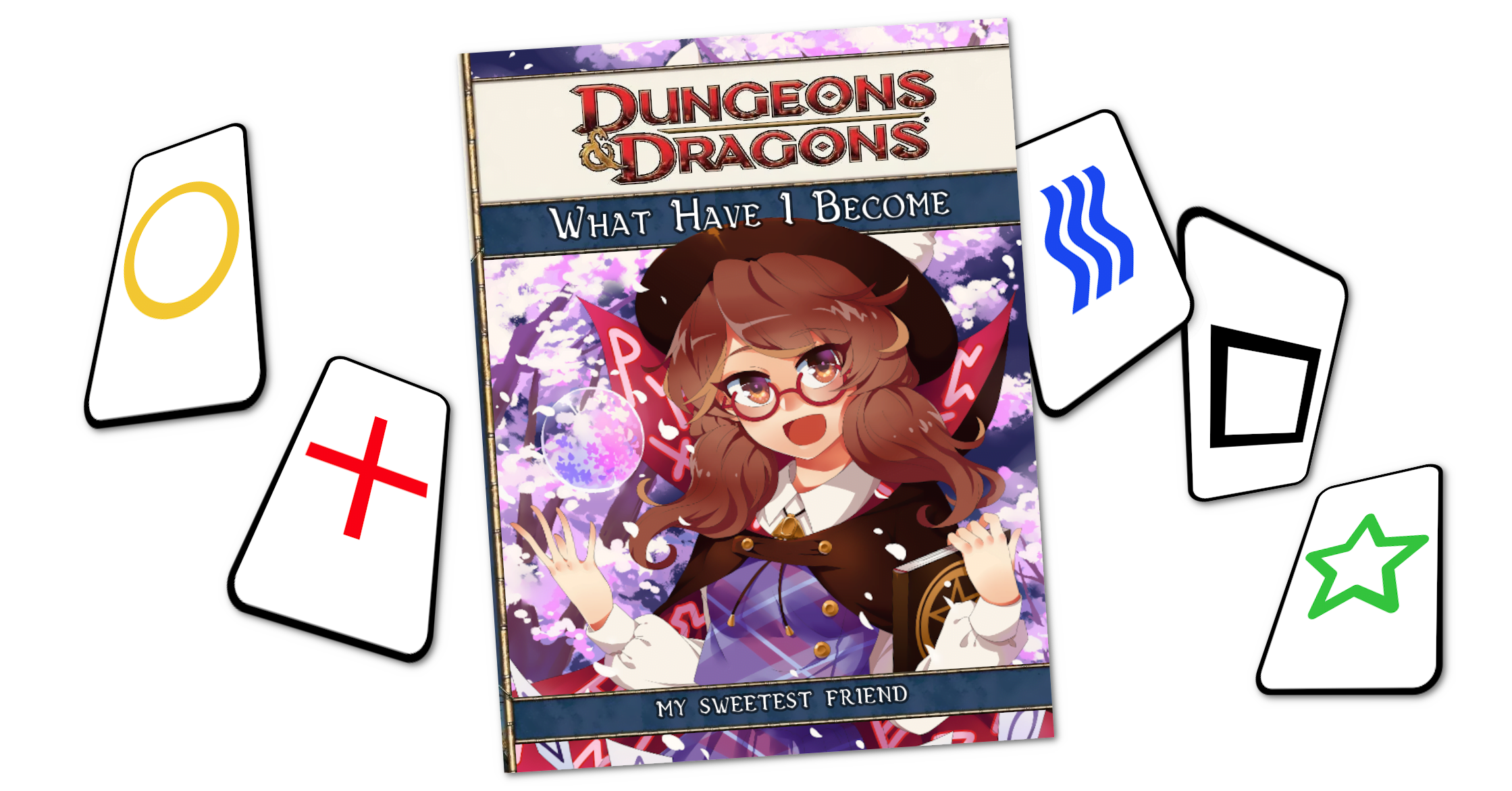
4e: Rites and Rituals
A complaint about 4th Edition Dungeons & Dragons was the ‘loss’ of a bunch of utility magic like Rope Trick and Leomund’s Hut. Typically, I hear it framed as the wizard specifically lost something by having its powers reduced to just the ability to fire off combat magic, and that’s kind of fair; when a character has a lot of utility effects in 3rd edition, if they were all gone and left only the combat stuff behind in 4th edition, it’d definitely be a limitation in scope.
The problem of course is that wizards lost none of their utility nonsense, and that utility nonsense was made more available to more characters, because if it wasn’t a combat effect, it was folded into the space of rituals.
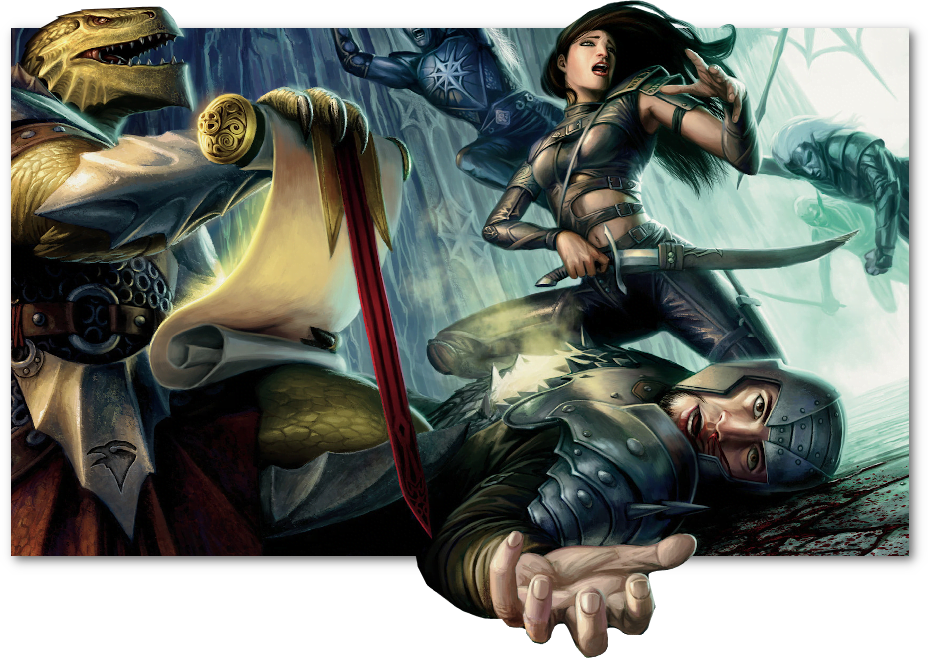
Rituals are basically spells, but they’re spells that are too complicated and time consuming to perform in combat, and give you a kind of effect that the game doesn’t want you to just dump anywhere, at any time, for free. This was one of the problems with 3rd edition magical effects; some of them made major, common impediments to plots into trivial actions that a player character could renewably blast through – things like Speak to Dead and Teleport Without Error aren’t utility effects for combat, but are just plot-busters.
In 4e, all of these utility effects are created not as magical items that let you do the utility effects (as many of them became in 3rd, with scrolls and wands occupying the ‘nice but rarely needed’ spell slots), but rather as a straight up exchange for something your character can do, with the right components and a book. It’s great, honestly, since back in 3rd edition, as builds evolved over time, players would eventually just get in the habit of keeping cash on hand to pay the local cleric or wizard or whatever to cast the spell they needed for whatever inconvenient bullshit they were dealing with.
How do they work?
Basically, you can either buy a ritual scroll, which is a one-off, purchaseable version that needs no expertise. You need the effect once and you don’t imagine you’ll have value out of getting it regularly, so you buy the ritual scroll and go for it. Anyone can do that.
But if you want to do the effect multiple times, it’s cheaper (long term) to take the Ritual Caster feat, and transcribe that scroll into your ritual book. That means it’s mastered. And when it’s mastered, you can do it any time you want by expending components.
Okay, okay, components, that’s the next thing, what’s that mean. Well, there’s a generic purchaseable thing called ‘components’ for each skill. You spend gold on buying a quantity of Components, and then you use those components to do the rituals when you need to.
This turns these things into an expendable resource, something you can’t just overuse to solve every problem, but as you level up, they become more affordable, and you start being able to spend a small quantity of this resource on making some problems go away. Knock costs 35 gp and a healing surge – meaning that at the low level, the gold is a serious cost, at high level the healing surge is. But it also means that you can play a character who spends, by mid level, spare change on the magical effects that, in 3rd edition, you’d never use because to use them would involve spending a spell slot – something that’s really valuable.
Plus, as with a lot of things in 4th edition, this opens up a lot of character options. Let’s say you want to play a fighter who’s learned a trick or two from mages. Then you can take the Ritual Caster feat – in combat, you’re still a knuckle-dusting badass who uses swords and axes and shields and whatnot, you didn’t become a wizard – but now you know how to magically undo a lock, or create an illusion. Same thing with a rogue, who can complement their thievery with teleportation rituals!
There’s also the Martial Practices system, which adds Ritual Like Effects to the non-magical characters – stuff that definitely should take some time and effort to do, but shouldn’t need to be done by a wizard in a pointy hat.
I really like the ritual system! It’s one of those super neat components of 4th Edition that’s been seemingly rendered invisible in a sea of bad faith arguments, and that’s a damn shame.